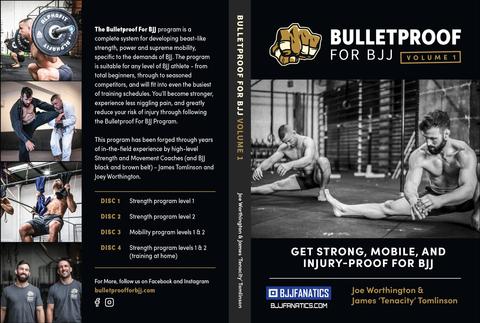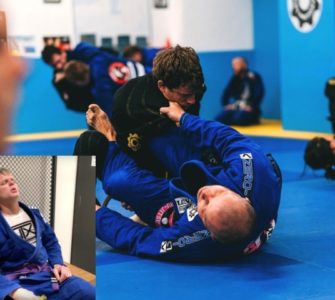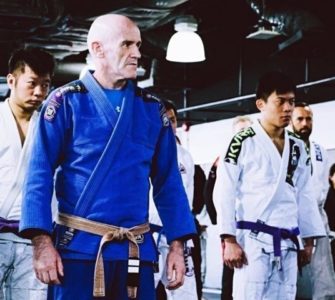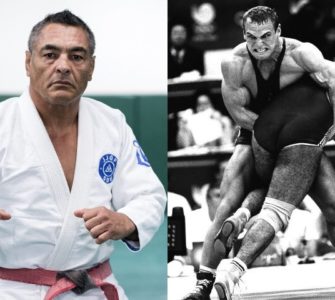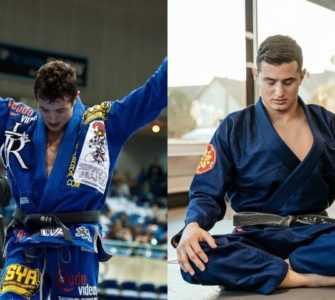One moment, you’re training Jiu Jitsu and everything is going fine; you’re rolling, submitting people, tapping out occasionally, learning new techniques, and just all-around having fun. But then, your elbow starts to hurt… It isn’t serious, but it kind of nags you. So you continue to train.
However, it becomes more and more painful as time goes on, and gradually turns into something that you cannot ignore any longer! Yup, you’ve got elbow tendonitis.
So how are you supposed to handle this? Can you keep training BJJ or do you have to stop completely?
WAIT, WHAT IS ELBOW TENDONITIS ANYWAY?
First of all, it’s important to understand what elbow tendonitis is… And what it isn’t. That is, elbow tendonitis isn’t some sort of an injury that you’ll get because of an overextended arm.
Sure enough, you can injure your elbow when, for example, your training partner or opponent armbars you. However, this is an injury that is sustained as a result of suddenly applied force to the joint – and is, thus, not elbow tendonitis.
What is elbow tendonitis, then? In the most simple of terms, it’s an inflammation of tendons in your elbow. More precisely, of the soft tissues that are located to the outside of it.
And how does it happen in Jiu-Jitsu? Well, it’s a result of overuse. Everyone has different thresholds, of course; but this overuse is generally equated with „too much“ gripping action.
In other words: the tendons in your forearm and elbow get overworked, and so they flare up! This results in a slow buildup of pain, which can – if left untreated – become serious and turn chronic.
HOW SHOULD I DEAL WITH IT?
If you already have tendonitis, then tough luck. To be fully transparent with you, your best bet may be to rest fully for a week or two.
Sure, this isn’t the most popular of decisions, but it’s the only truly certain one! Inflamed tendons need some time to heal, and resting a bit from BJJ would benefit them greatly. Yet again, even better if you go for it when this issue has only started bugging you; the sooner you rest, the faster you’ll be on the mats.
Now, if you don’t want to miss out on BJJ classes, then you can simply avoid using the affected hand. Tie it under your belt or just keep it away from the training partner’s Gi. Then again, you can make this even more simple by going only to No Gi training sessions; where your grips will be a lot less taxing on your tendons.
The goal with these measures is to keep yourself away from gripping too much. Remember: it’s gripping that got you into this mess, and it’s less gripping that will take you out of it.
You can further facilitate the recovery process by icing the elbow after practice and several times per day. Also, make it a point to self-massage and stretch the affected tendons whenever you can; as this will bring a lot of relief your way as well.
HOW TO PREVENT IT?
To prevent elbow tendonitis from appearing, you should strengthen the extensor muscles of your forearm. As gripping the Gi (over)works the flexor muscles, you should aim to build some balance by working on the strength of the extensor ones as well.
Here’s a video of two such strengthening exercises:
Also, stretch your forearms regularly after training. It’s too easy to forego it; but if you keep it as a part of your after-training-bucket-list, your Jiu Jitsu will keep on going without this issue for a long, long time.
Stop Feeling Sore, Tired, And Injured And Start Being Preventative With Your Injuries. It’s Time To Become Bulletproof For BJJ!
- Get grappling-specific exercise routines to build mobility, strength, grip, and core, with or without a gym
- This system was designed by BJJ brown and black belts and professional fitness gurus Joe Worthington and James Tomlinson
- Get different exercises, sets, reps, and more to keep your workouts fresh and dynamic:


